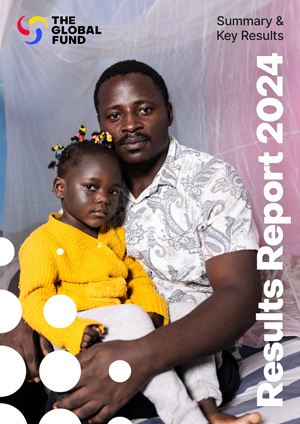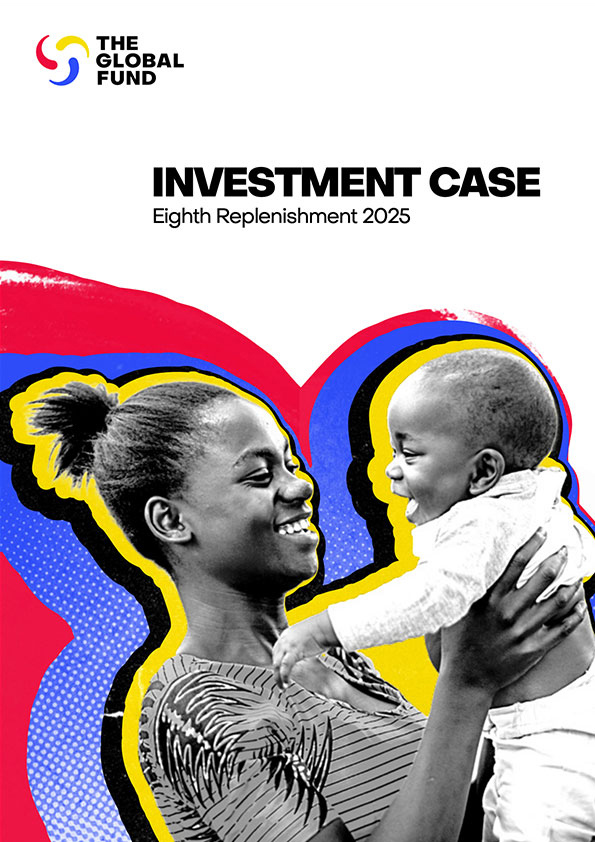World Malaria Day: 2010 is critical year for global efforts to defeat malaria
25 April 2010
Geneva - The global community faces a pivotal year in 2010 in a campaign to eliminate malaria as a major health challenge by 2015 in most of the countries where the disease is endemic. Financial resources needed to meet this internationally agreed goal must be secured this year for this target to be met.
The Global Fund provides two-thirds of international funding in the global effort to control the disease and by the end of 2009 programs supported by the Global Fund had distributed 104 million insecticide-treated nets to prevent malaria. A further 100 million nets are scheduled to be distributed in 2010.
World Malaria Day on April 25th is an opportunity to reflect on what still needs to be done to conquer this disease which kills more than 880,000 people a year, most of them children under the age of five. More than 90 percent of global malaria deaths are in Africa.
The fight against malaria has forged one of the most effective initiatives in global public health, under the leadership of the Roll Back Malaria Partnership, which has been highly successful in coordinating efforts and directing resources to where the need is greatest.
The launch of the RBM Partnership in 1998, the creation of the Global Fund in 2001 and of the President’s Malaria Initiative in 2005 and the introduction of new medical techniques have helped to galvanize efforts to fight a disease which had become neglected.
Today at least 10 of the most endemic countries in Africa have reported declines in new malaria cases and steep falls in child mortality of 50 to 80 percent.
Despite remarkable progress in the past few years, any reduction in the flow of funding to fight the disease could put recent achievements at risk.
“Investments in malaria prevention and control have been among the best investments in global health, resulting in a dramatic decrease in malaria deaths and illness. If adequate financial resources are secured, we could further scale up our efforts and malaria could be eliminated as a public health problem in most malaria-endemic countries by 2015. It can be done. It must be done,” said the Global Fund’s Executive Director, Michel Kazatchkine.
Donors will decide in 2010 how much they will pledge in new financing for the Global Fund over the three years running from 2011-2013.
In so doing they will help decide if the health-related Millennium Development Goals (MDGs) can be met. The health MDGs call for reducing child mortality, improving maternal health and combating HIV/AIDS, malaria and other diseases.
In sub-Saharan Africa, Global Fund grants have enabled provision of 72 million long-lasting insecticidal nets and 90 million courses of malaria treatment.
The Global Fund is now helping to fund the largest distribution campaign for long-lasting nets in the history of malaria control. The effort is concentrated in Nigeria and the Democratic Republic of Congo, which together bear 36 percent of the malaria burden in Africa.
Global Fund investments have also played a key role in expanding coverage of innovative and highly effective malaria treatments in many countries where older treatments have encountered drug resistance and, as a result, are no longer working.
The Global Fund has presented three resource scenarios for consideration by its donors. Each scenario is accompanied by an estimate of the results that could be expected at the end of the three-year period for which new funding is being sought.
For example, under the three resource scenarios for 2011-2013 of $13 billion, $17 billion and $20 billion, respectively, Global Fund investments would meet 72 percent of global need in 2015 for insecticide-treated nets for malaria and 94 percent of that need in sub-Saharan Africa if the highest resource scenario applied.
The international target for malaria is to ensure that insecticide-treated nets are provided to 80 percent of the populations most at risk of contracting malaria by 2010. The contribution of programs supported by the Global Fund toward reaching this target in sub-Saharan Africa has increased dramatically in recent years, from 5 percent in 2005 to 58 percent at the end of 2009.







